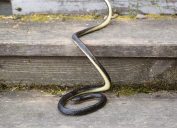The No. 1 Sign There's a Snake in Your Crawl Space
Find out fast so your crawl space doesn't turn into a slither space.
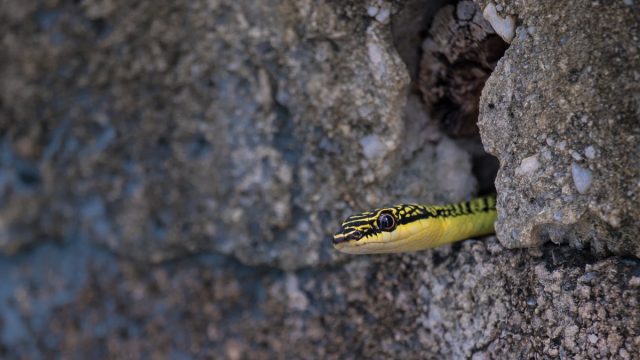
That snakes love a good crawl space should come as little surprise: They're dry, dark, and packed with potential food. Frankly, in the eyes of a snake, a crawl space is one of those real estate listings that go off the market in a day. Still, of all the places snakes commonly like to hide out in your home—your kitchen, your attic, your garage, to name a few—your crawl space is arguably the worst one to scope out. After all, the things that attract the critters to this space are probably the same things that keep you away. But there are a few dead ringers there could be a snake in your crawl space. Here's how experts say you can tell.
READ THIS NEXT: The No. 1 Way to Keep Snakes From Getting in Through Your Toilet.
Why snakes like hiding in crawl spaces.

"Snakes favor damp, chilly, and dark environments," says Sholom Rosenbloom, the owner of Baltimore-based Rosenbloom Pest Control. In other words, the exact way you'd describe a crawl space also describes a snake's ideal environment. Mice and other small creatures that comprise the typical ophidian diet also tend to camp out under there.
But the most surprising reason? There's a good chance you haven't cleaned out your crawl space in a while, Rosenbloom notes. "Snakes can find great concealment under these conditions to slumber and hunt." So you may want to dispose of those woodpiles and old yard equipment.
How to prevent snakes from getting into your crawl space.
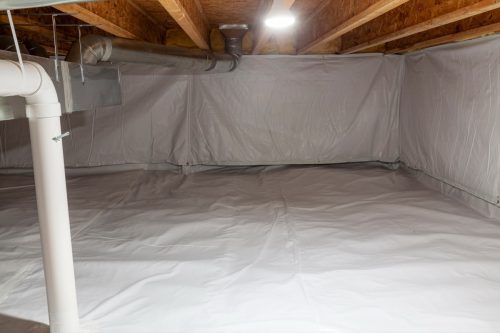
The single best way to keep snakes out of your crawl space is, sorry to say, the one you likely want to hear the least: Keep it clean.
Various traps—things like glue traps and snap traps—can work too, but they're often inhumane. Creatures that get stuck in glue boards, for instance, don't understand what's happening and can end up suffering for extended periods.
With that in mind, you're better off getting a snake repellent, though be sure to double-check the efficacy of certain methods against whatever species are most common in your area.
If you're concerned about the chemicals in certain repellents, "natural repellents such as hot pepper spray and mothballs may work against some snake species, but not all," Miller says.
Finally, you could kickstart a minor construction project. "If you want to prevent snakes from invading your space, it's best to seal all holes larger than a quarter-inch," Larry Snider, VP of operations at Casago Vacation Rentals, tells Best Life. "Bonus, this will also help keep out rodents."
For more pest advice delivered straight to your inbox, sign up for our daily newsletter.
Here are some less-common ways to know if a snake is around.

It can be hard to pinpoint an odor in a musty crawl space, but if you catch a whiff of a previously unidentified fragrance coming from the area, it's worth scoping it out.
"Snakes have a noticeable, distinctive odor," Rosenbloom says. It's tough to describe to a tee, but it comes off a bit like cucumbers.
Another hard-to-pull-off way to know if you've got snakes is the flour trick. Here's how it works: Put some flour around the area or areas you think a snake could be hiding. Cordon off the area overnight so pets and kids don't accidentally mess things up. Check in the morning. If you see trails that seem like they'd be left by a snake, there's your answer.
And here's the number-one sign there's a snake in your crawl space.
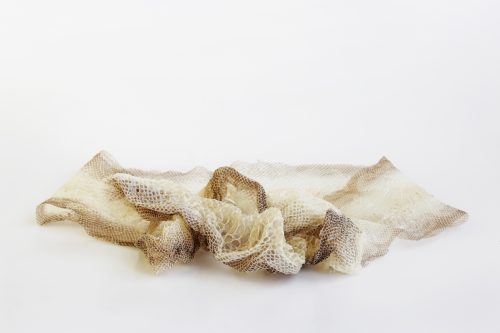
Snakes shed; they leave behind a full casing on a periodic basis. And if you see one in the vicinity of your crawl space, that's a surefire sign a snake has been there recently.
"You can find shed snakeskin [wherever] there are snakes," Jack Miller, a home improvement expert and the founder of pest control website How I Get Rid Of, tells Best Life. "Snakes shed their skins several times per year so it's highly likely for you to encounter the remnants of their shedding."
As Ian Williams, BCE, technical services manager at pest control company Orkin, previously told Best Life, hard edges like those of concrete and wood (of which there is usually plenty in a crawl space) can help snakes peel off their old skin. "The home can then provide shelter while their new scales harden."
READ THIS NEXT: 9 Ways to Snake-Proof Your Yard, According to Experts.
What to do if you have a snake in your crawl space.
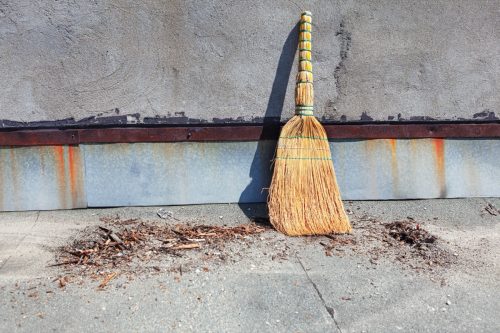
Removing a snake from a kitchen, porch, or another well-lit area is nerve-wracking but not impossible. You can use a broom or a long stick to try and remove the creature, and you can see what you're doing the whole time.
Crawl spaces pose a different quandary: They're poorly lit by nature, so any removal processes are possibly done flying blind. Considering that it's tough to tell the difference between a venomous snake and its non-venomous counterparts—and that snake venom can cause serious harm—you're better off leaving the situation to those who have experience. "The best solution is to call professionals," Miller says.
